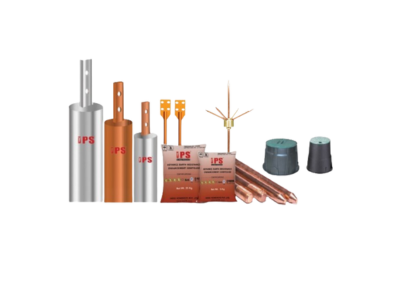Chemical Gel Earthing is a very advance earthing (grounding) technology that uses a specially developed conductive gel and backfill compounds instead of traditional salt–charcoal mixtures. It provides a low-resistance, maintenance-free, and long-lasting earthing system for electrical safety.
How it Works:
- A GI/Copper electrode (pipe or plate) is installed in the ground.
- Around it, a gel compound (often carbon-based or bentonite with conductive salts) is filled.
- This gel retains moisture and ensures consistent conductivity between soil and the electrode.
- It prevents corrosion of the electrode and maintains a stable earth resistance over many years.
Advantages of Chemical Gel Earthing:
- Low & stable resistance – ensures fault current is safely discharged.
- Maintenance-free – no need to regularly add water, salt, or charcoal.
- Longer life – anti-corrosive, lasts 10–15 years or more.
- Safe for sensitive equipment – protects electrical and electronic systems from shocks, surges, and lightning.
- Eco-friendly – no soil contamination like in conventional earthing.
Applications:
- Industrial plants and factories.
- Electrical substations and transformer yards.
- IT parks, data centers, and telecom towers.
- Residential and commercial buildings.
- Hospitals and sensitive medical equipment.

